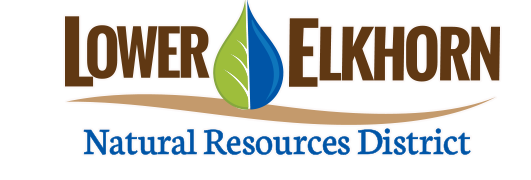What Lies Beneath? Groundwater regulations proposed to help lower nitrate levels in Cuming, Colfax, and Dodge Counties
/High nitrate levels in your drinking water could pose health risks for you and your family and they’re on the rise in portions of Cuming, Colfax and Dodge counties. Learn more about what lies beneath and the protective measures proposed at a virtual informational meeting hosted by the Lower Elkhorn Natural Resources District (LENRD) at 6:30 p.m. Thursday, Dec. 17.
Speakers during the virtual informational meeting include:
Dr. Jesse E. Bell, University of Nebraska Medical Center Claire M. Hubbard Professor of Health and Environment in the Department of Environmental, Agricultural, and Occupational Health
Tatiana Davila, Nebraska Department of Environment and Energy Groundwater Geologist and Wellhead Protection Coordinator
Charles Shapiro, University of Nebraska-Lincoln (Soil Science/Crop Nutrition) Emeritus Professor
Brian Bruckner, Lower Elkhorn Natural Resources District Assistant Manager
In 1997, the LENRD established a Groundwater Management Area to improve and protect groundwater quantity and quality. This designation put the entire district into Phase 1 of groundwater management controls. Since then, portions of Pierce and Madison counties have moved into Phase 2 and 3 quality-management sub-areas due to increased nitrate concentration in the groundwater.
LENRD’s groundwater quality monitoring program continues to monitor levels of nitrate-nitrogen throughout the district and is proposing a Phase 2 Groundwater Management Area in portions of Cuming, Colfax and Dodge counties due to the detection of elevated nitrates.
In the LENRD, a Phase 2 area can be delineated if at least 20 percent of the monitored wells have nitrate concentrations that range between 5 and 9 parts per million (ppm)for nitrate-nitrogen. The LENRD groundwater quality monitoring program has detected this in portions of the tri-county area. See the attached map for further details or visit lenrd.org for additional information.
Nitrate is found naturally in the environment; however, excess nitrate comes primarily from the use of commercial fertilizers (both organic and manufactured). Nitrate dissolves readily in water and when carried through the soil below plant roots can easily contaminate groundwater
“Nitrogen is present in native and farming ecosystems and necessary for plant growth,” said LENRD Assistant Manager Brian Bruckner. “Nitrate commonly enters groundwater when fertilizers are added to the soil and leach through the root zone. Land use, soil type and precipitation all play a role in leaching potential. Coarse-textured, low-organic matter soils under high rainfall or irrigation have the highest leaching potential.”
Crops use nitrogen more efficiently when it is applied as close as possible to when the plant needs it. Research shows the timing of fertilizer application helps prevent nitrogen loss and increases potential plant uptake.
“Phase area controls are developed to remedy groundwater nitrate issues – ramping up the controls as conditions are triggered,” Bruckner said. “Improvements are not expected immediately, but hopefully in the next several years positive changes will be realized. Growers should be able adapt to production changes without negative impacts on crop yields and may see an uptick in profitably with increased nitrogen efficiency.”
Phase 2 controls include:
Prohibiting fall/winter commercial nitrogen fertilizer application between Oct. 15 and March 15
Certifying operators, who apply commercial nitrogen
Submitting field reports to the LENRD annually by March 15
Requiring deep soil sampling (24 inches) in fields planted continuously to corn
Requiring irrigation water sampling once every four years
“It’s important to remember that as groundwater users, we have a responsibility to protect the resource for the future. How many years into the future is up to us,” said Bruckner.
Meeting webinar links will be available on the Lower Elkhorn NRD website and Facebook page. The public will have the opportunity to view the webinar and submit comments and questions during the virtual event. For additional information, contact the Lower Elkhorn NRD at 402.371.7313.
Virtual Informational Meeting - the recording of this meeting will be available soon!
Open House Public Hearing
March 25, 2021 | 5:00-7:00 p.m.
Nielsen Center in West Point, Nebraska

